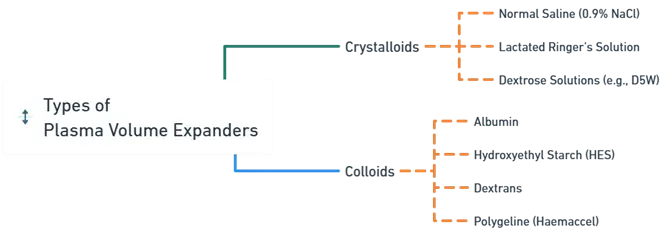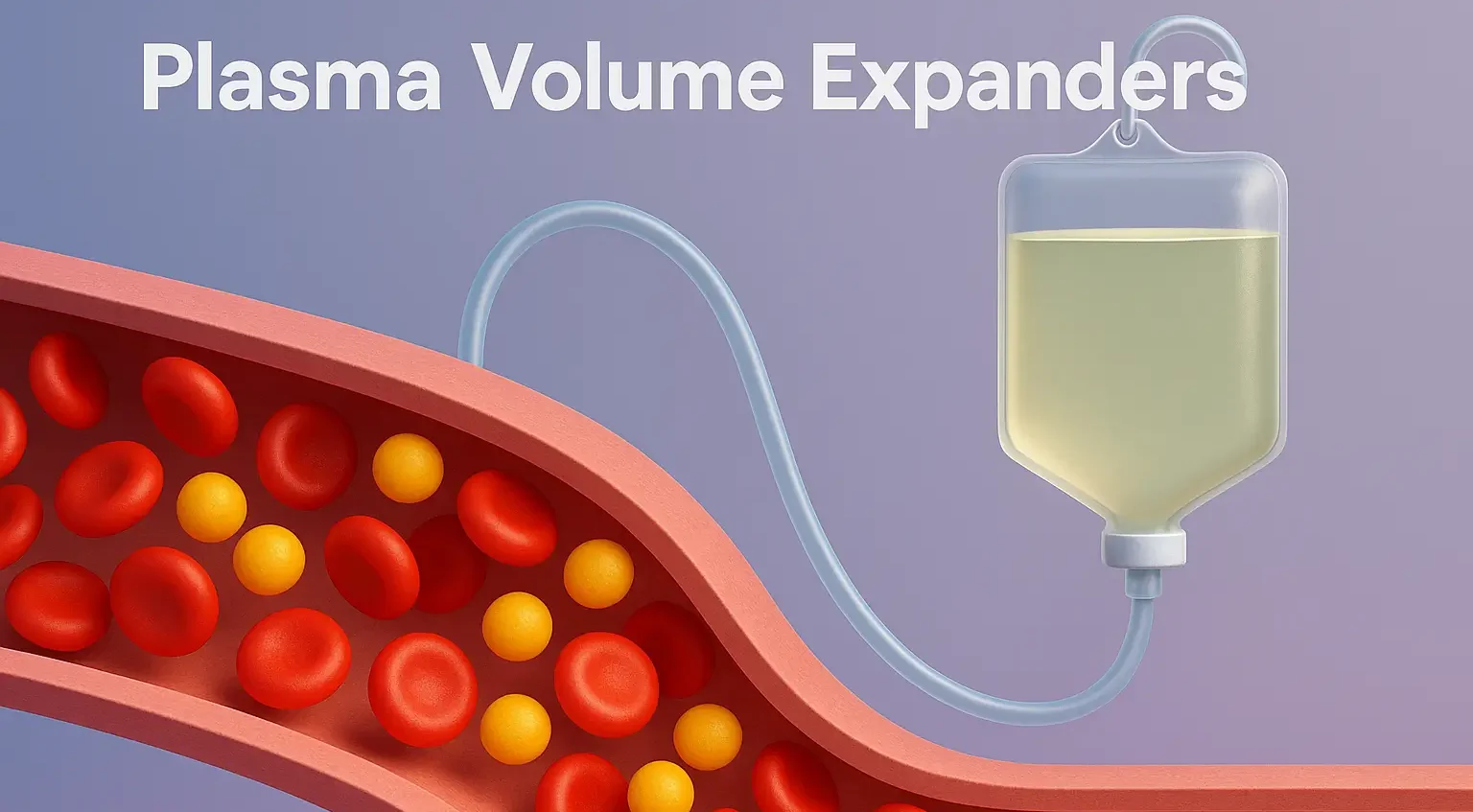Definition of Plasma Volume Expanders
- Plasma Volume Expanders are fluids used to restore and maintain intravascular volume in patients experiencing hypovolemia (low blood volume), such as during shock, trauma, burns, or surgery.
- They work by increasing osmotic pressure, which helps retain fluid within the vascular compartment.
Types of Plasma Volume Expanders:

1. Crystalloids:
- Normal Saline (0.9
- Composition: Sodium chloride.
- Use: Volume replacement in hypovolemia, shock, resuscitation.
- Advantages: Widely available, inexpensive.
- Disadvantages: Can cause hyperchloremic metabolic acidosis with large volumes.
- Lactated Ringer’s Solution:
- Composition: Sodium, chloride, potassium, calcium, and lactate.
- Use: Similar to normal saline; preferred in surgery due to electrolyte composition.
- Advantages: More physiologic electrolyte balance; buffer provided by lactate.
- Disadvantages: Not suitable for patients with liver dysfunction (impaired lactate metabolism).
- Dextrose Solutions (e.g., D5W):
- Use: Maintenance fluids; not effective as volume expanders since dextrose is rapidly metabolized.
- Advantages: Provides calories; used in combination with other fluids.
- Disadvantages: Limited volume-expanding capability.
2. Colloids:
- Albumin:
- Mechanism: Natural protein that maintains oncotic pressure.
- Use: Hypovolemia, burns, liver cirrhosis, nephrotic syndrome.
- Advantages: Long intravascular persistence.
- Disadvantages: Expensive; risk of allergic reactions.
- Hydroxyethyl Starch (HES):
- Use: Volume resuscitation in hypovolemia and shock.
- Advantages: Effective plasma volume expansion.
- Disadvantages: Risk of coagulopathy, renal impairment, allergic reactions.
- Dextrans:
- Use: Volume expansion, prevention of surgical adhesions (historical use).
- Advantages: Effective plasma volume expansion.
- Disadvantages: Risk of anaphylaxis, coagulopathy, hyperglycemia.
- Polygeline (Haemaccel):
- Use: Volume replacement in hypovolemia.
- Advantages: Effective volume expansion.
- Disadvantages: Less commonly used due to availability of better alternatives; risk of allergic reactions.
Clinical Considerations:
- Choice Between Crystalloids and Colloids: Dependent on clinical scenario, patient condition, and cost considerations. Current trends favor crystalloids due to safety profile.
- Fluid Overload Risk: Especially with colloids; requires careful monitoring.
- Electrolyte Balance: Crystalloids can affect electrolyte levels; selection based on patient needs is crucial.
- Allergic Reactions: More common with certain colloids; premedication may be necessary.
Click Here to Watch the Best Pharma Videos

